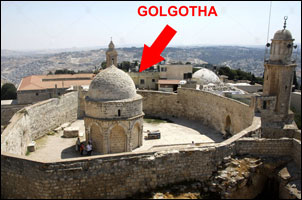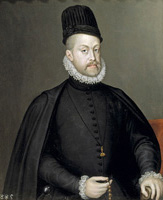For the first 3 centuries, there were 10 great pagan persecutions of Christianity, culminating in the longest and bitterest under Emperor Diocletian. It is called the Era of the Martyrs, and the bishops and deacons were always the first to be arrested and executed. In Roma, it is known as the Era of the Catacombs, when the life of the Christians consisted of persecutions above ground . . . and prayer underground. Persecution kept the Congregation pure and nobody lifted up his head above his brothers, or sought preeminence.
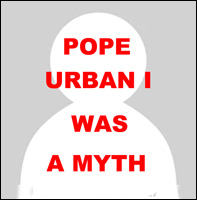 Pope Urban I (222–230) was a myth. |
|
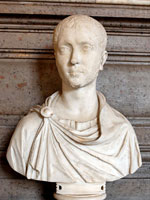 Emperor Severus Alexander (207–235). Emperor from 222 to 235. |
Emperor Severus Alexander was the last of the Severus dynasty. His assassination led to nearly 50 years of civil wars, foreign invasion, and the collapse of the monetary system. That chaos finally led to the conquest of the entire Roman Empire by Jesus Constantine.
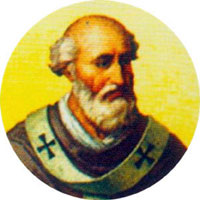 Pope Urban II (1035–1099). Pope from 1088 to 1099. |
|
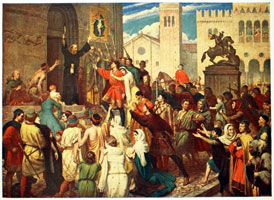 Peter the Hermit (1050–1115) preaching the First Crusade. |
Urban was assisted by a rabble rousing monk named Peter the Hermit. Together they were able to persuade thousands of Frenchmen to take up the cross and head to Palestine. That was a multinational effort as people from most of the western European countries were represented. However, the largest contingent were French.
In August 1096, a huge undisciplined mob appeared outside the gates of Constantinople. Emperor Alexius was appalled. He kept a watchful eye on them and refused to allow them into the city . . . except in small groups. He quickly put them on ships and ferried them across the Bosporus.
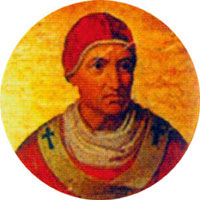 Pope Urban III. Pope from 1185 to 1187. |
|
At the dawn of the new millennium, a new group of Muslims emerged from the area of the Euphrates River. They were called Seljuk Turks and they were the precursors of the Terrible Turks.
The most famous, or infamous, Seljuk Turk was called Saladin (1137–1193). Saladin was mostly responsible for making King Richard the Babylonian Lionheart a "war hero."
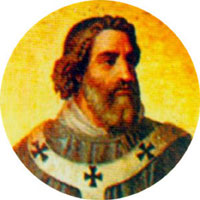 Pope Urban IV (1195–1264. Pope from 1261 to 1264. |
|
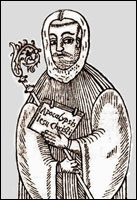 Joachim of Fiore (1135–1202). |
Urban IV was succeeded by Pope Clement IV, who summoned "Dumb Ox" Thomas Aquinas to Roma as his "spiritual advisor." Aquinas denied that triune immersion was necessary for baptism, and he added the filioque clause to the Apostles Creed. That novelty states that the Holy Spirit proceeds from the Father . . . and the Son . . . thus making the Holy Spirit a hybrid.
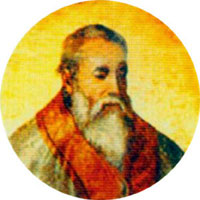 Pope Urban V (1310–1370). Pope from 1362 to 1370. |
|
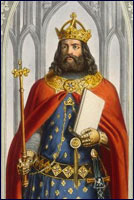 Fake "Roman" Emperor Charles IV. (1316–1378). |
That puppet "Roman" Emperor did not find it incongruous that he was not allowed to reign in Roma.
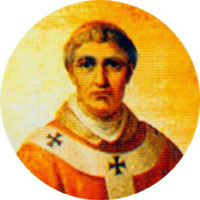 Pope Urban VI (1318–1389). Pope from 1378 to 1389. |
|
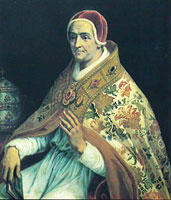 Avignon Pope Clement VII (1342–1394). Avignon Pope from 1378 to 1394. |
During the Great Western Schism, 3 "Holy Fathers" reigned simultaneously at Roma, Avignon, and Pisa. All of Europe was in a state of confusion because backing the wrong Pope could get you burned alive at the stake. It was a great opportunity for the Terrible Turks, who were waiting impatiently to invade Western Europe.
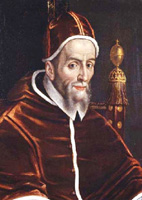 Pope Urban VII (1521–1590). Pope from September 15 to 27, 1590. |
|
Philip II financed his "Invincible" Armada with gold stolen from the New World natives, but Pope Sixtus V (1588–1590) also promised him a huge payment in gold when he landed in England. That landing never happened, but Philip II still demanded payment. That was why the furious and bankrupt Philip sent so many Popes to St. Peter.
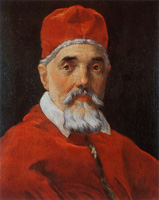 Pope Urban VIII (1568–1644). Pope from 1623 to 1644. |
|
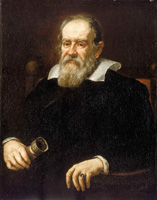 Galileo Galilei, S.J. (1564–1642). |
In 1633, Galileo was commanded to appear before the "Holy Office" for writing a book entitled Dialogue Concerning the Two Chief World Systems, Ptolemaic and Copernican. This book advocated the heliocentric model of the solar system that the earth turns on its axis and orbits the sun.
The Dominican monks ran the Inquisition and they despised and hated the Jesuits as upstarts. The Dominicans claimed to be DEFENDING the "Bible" when they condemned Galileo. The "Bible" they were referring to was of course the corrupt Latin Vulgate Version. Here is an excerpt from the trial of Galileo:
You have rendered yourself, the document declared, vehemently suspect of heresy, namely of having held and believed a doctrine which is false and contrary to the Sacred and Divine Scriptures, that the Sun is the centre of the world and does not move from east to west, and that the Earth moves and is not the centre of the world; and that one may hold and defend as probable an opinion after it has been declared and defined contrary to Holy Scripture. (Shea Galileo in Rome, p. 193).
Pope Urban VIII was the last Urban in the nightmarish Papal dynasty. The best way to rescue Catholics . . . and Muslims . . . from the Babylonian system is to present a true history of the Papal dynasty:
Flee out of the midst of Babylon, and deliver every man his soul: be not cut off in her iniquity, for it is the time of JEHOVAH's vengeance; he will render unto her a recompense (Jeremiah 51:6).
And I heard another voice from heaven saying, "Come out of her, my people, that ye be not partakers of her sins, and that ye receive not of her plagues" (Apocalypse 18:4).
Vital links
References
Gail, Marzieh. The Three Popes: An Account of the Great Western Schism When Rival Popes Vied for Power. Simon & Schuster, New York, 1960.
Galileo, Galilei. (Stillman Drake Translator). Dialogue Concerning the Two Chief World Systems, Ptolemaic and Copernican. University of California Press, Berkeley & Los Angeles, 1967.
Mollat. G. The Popes At Avignon: the Babylonian Captivity of the Medieval Church. Harper & Row Publishers, New York, 1965.
Shea, William R. & Artigas. Mariano. Galileo in Rome. Oxford University Press, New York, 2003.
